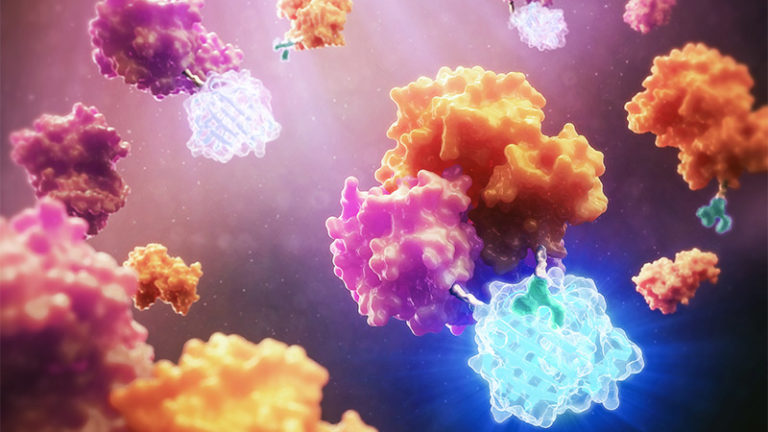New Study Illuminates Strategies for Bioluminescence Imaging of the Brain
Promega researchers develop NanoLuc-based tool for studying neurological diseases in live models
Madison, WI USA. (February 14, 2023)
Research published in Nature Chemical Biology demonstrates a new tool for scientists studying conditions such as autism and Alzheimer’s disease. Promega R&D scientists, alongside co-authors from Stanford Medicine, have published a paper describing the development of cephalofurimazine, a novel substrate for NanoLuc® Luciferase that enables researchers to study the brain using bioluminescence imaging. The study marks a major technological advance for research on complex neurological diseases and potential treatments.
“This is going to be a very important tool for scientists studying both developmental and degenerative conditions in the brain,” says Thomas Kirkland, Senior Scientific Investigator at Promega. “Cephalofurimazine will allow us to bridge the gap between cell models and animal models.”
Bioluminescence Imaging of the Brain
Bioluminescence imaging allows scientists to non-invasively study gene expression, cell location and molecular events in live animals. A single specimen can be continuously studied over the course of its life, with minimal perturbation to its natural anatomy and physiology. This is a critical technique for studying the progression of developmental and degenerative diseases, and for characterizing the effects of potential treatments within the body.
The brain, however, presents unique challenges due to the physical and physiological barriers formed by the skull and the blood-brain barrier. Cephalofurimazine, the new substrate described in Nature Chemical Biology, not only overcomes these challenges, it also enhances sensitivity by at least 2.5-fold compared to previous NanoLuc® substrates used in neurological imaging. This will allow scientists to better visualize molecular events in mouse models representing diseases such as autism, Alzheimer’s disease, and brain cancer.
Contributing to this work were Joel Walker, Mary Hall, Mark Klein, Lance Encell, and Thomas Kirkland at Promega, and Yichi Su, Xiang Wu, Lan Liu, Guosong Hong, and Michael Lin at Stanford Medicine.
NanoLuc® Luciferase
Promega developed the engineered NanoLuc® Luciferase ten years ago to support enhanced sensitivity in many life science research applications. In addition to assays for studying protein:protein interactions, target engagement and gene expression, the company will expand its offerings this spring with the launch of fluorofurimazine, a NanoLuc® substrate for whole-animal bioluminescence imaging. Learn more about NanoLuc® technologies for bioluminescence imaging here.
Read the paper: “An optimized bioluminescent substrate for non-invasive imaging in the brain"

About Promega Corporation
Promega Corporation is a leader in providing innovative solutions and technical support to the life sciences industry. The company’s portfolio of over 4,000 products support a range of life science work across areas such as cell biology; DNA, RNA and protein analysis; drug development; human identification and molecular diagnostics. For over 40 years these tools and technologies have grown in their application and are used today by scientists and technicians in labs for academic and government research, forensics, pharmaceuticals, clinical diagnostics and agricultural and environmental testing. Promega is headquartered in Madison, WI, USA with branches in 16 countries and over 50 global distributors. Connect with Promega on Twitter, LinkedIn, Facebook, Instagram and the Promega Connections blog.

Research published in Nature Chemical Biology enables researchers to study neurological disease using NanoLuc® Technology.